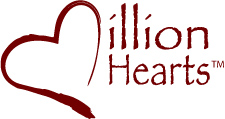A Million Hearts, A Thousand Genes, and Your Family History
Posted on byIn September 2011, the US Department of Health and Human Services announced a new initiative to prevent 1 million heart attacks and strokes in the United States in the next 5 years. This campaign will implement proven, effective, and inexpensive interventions in both clinical and community settings. In clinical practice, it will improve management of the ABCS (aspirin use for high risk patients, blood pressure control, cholesterol management and smoking cessation). In community settings, it will enhance efforts to reduce smoking, improve nutrition and reduce high blood pressure.
Can the emerging tools of genomics and family history be used to reduce the burden of heart disease and stroke? In the past decade, epidemiologic studies have discovered dozens of common genetic variants that increase the risk of heart disease and stroke. This information may be useful in developing new interventions, including medications, and targeting existing interventions. However, because heart disease arises from complex interactions of genetic and environmental factors, genetic variants currently have little utility for predictive screening of healthy persons. In coming years, genetic research is likely to continue uncovering hundreds if not thousands of genetic variants with smaller and smaller impact on heart disease risks.
What can genomics do now to help reduce the burden of heart disease and stroke? We have known for quite some time that both heart disease and stroke “run in families”. People with close relatives of heart disease are at double the risk of heart disease. The risk is higher if the relatives have early onset heart disease or if multiple relatives are affected. In Utah, population studies have shown that about 15% of families account for almost half the cases of all heart disease and for about 80% of early heart disease (under age 50 years). A recent national survey showed that 16% of US adults have a positive family history of early heart disease in a close relative (parent, child, or sibling). The US Preventive Services Task Force has recommended that young adults be screened for lipid disorders if they are at increased risk for heart disease. A family history of early heart disease is one of the risk factors.
In addition, more than 50 inherited cardiovascular conditions caused by deleterious mutations in a few genes have been recognized so far, with diagnostic tests increasingly available. One of the most common of these conditions, familial hypercholesterolemia (FH), occurs in about 1 in 500 people, with more than 600,000 affected persons in the US. The disease is caused by mutations in a few genes related to low density lipoprotein (LDL) cholesterol. It is passed from one generation to the next with a 50% probability. Carriers of these mutations have a very high risk of heart disease before age 50 years. Early identification and intervention with statins is effective in reducing illness and death in affected persons—but most are not diagnosed early. Failure to recognize and aggressively treat high cholesterol in persons with FH leads to many early but preventable deaths from heart disease.
One way to improve early detection is by screening relatives of patients with hypercholesterolemia, an intervention called “cascade screening”. Several studies in Europe found that cascade screening to be cost-effective. This finding led the UK’s National Institute for Clinical Excellence to recommend the identification of affected relatives of persons with clinical diagnosis of FH. Recently, a Working Group in the UK recommended (12) considering the development of a national database of patients and family members, which could be used for clinical audit, diagnosis and treatment, and research. Such a tracking system could be used to identify, contact, and manage at risk relatives along with good family record keeping.
Public health efforts to reduce the burden of heart disease and stroke can benefit today from increased awareness of the role of family history as a risk factor. Collection of family history information through free portals such as the Surgeon General’s family history tool can help remind people and healthcare providers of the importance of managing the ABCS and help identify people with inherited conditions like familial hypercholesterolemia. While the ultimate promise of genomic medicine is still a few years away, we can integrate genetics and family history now into our fight against heart disease and stroke in the United States.
Posted on by



